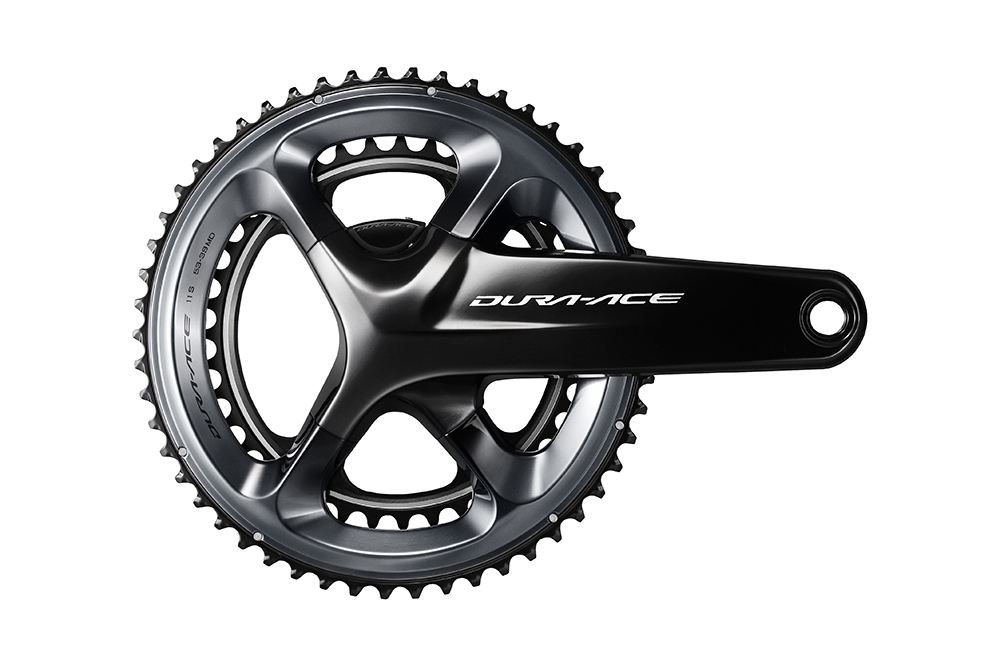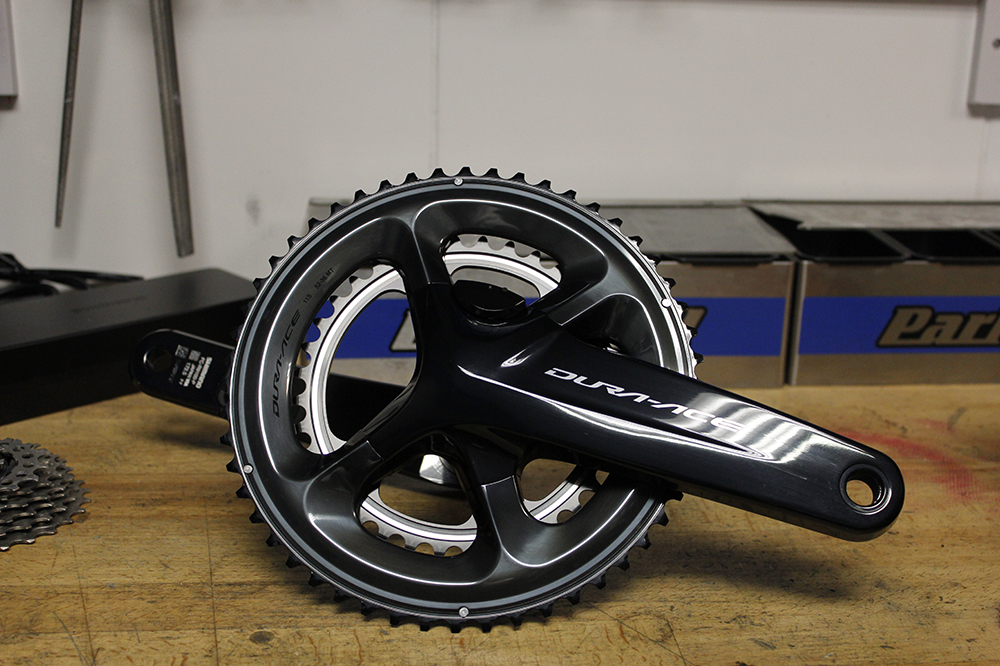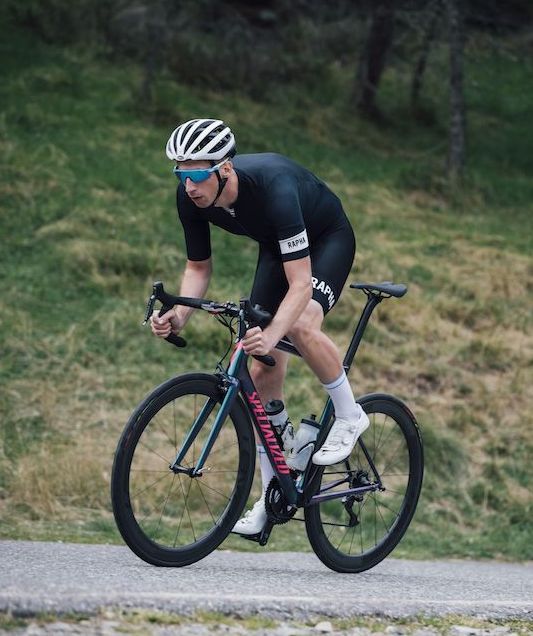Shimano Dura-Ace R9100-P power meter review
The new Shimano Dura-Ace R9100-P power meter is a hot product right now, but has the Japanese giant got it right? Maybe not just yet

Shimano's first crack at a power meter with the R9100-P is by no means an immediate market leader, but the Japanese giant has delivered a reliable and easy to use dual-sided meter that looks the business. It has its issues, which could be rectified through updates. But for such a high price, it's worth considering if other options might suit your needs and save you some cash too.
-
+
Reliable overall readings
-
+
Easy to calibrate
-
+
Looks great
-
+
Long battery life/rechargeable
-
-
Expensive
-
-
Potentially difficult to install at home
-
-
Left/right readings inconsistent
- -
You can trust Cycling Weekly.

There was a great deal of excitement upon hearing the initial news that Shimano was to make it's first ever power meter - and with good reason. The Japanese giant has long been at the top of market for it's quality groupsets and components, so what reason was there to doubt that the new Shimano Dura-Ace R9100-P power meter wouldn't follow suit?
>>> Do we really need 12 speed?
The first impression of the Shimano Dura-Ace R9100-P power meter is that it looks really sleek. The rectangular pods containing the strain gauges on either side of this dual-sided power meter complement the aesthetics of the new Dura-Ace design.
The left side is housed neatly on the inner side of the crank arm, while the right side is hardly noticeable; tucked neatly right up towards the chainring bolts. There's no issue with clearance of the right side pod, while Shimano says the left pod (8mm deep) should provide enough clearance for direct mount brakes under the chainstays.
>>> Shimano grouspsets compared

The only real giveaway on the drive side is the small power port which sits between the arms of the crank spider. This is where the meter is recharged via a magnetic cable which fits under a plastic flap on the port. The flap doesn't feel overly secure, but according to Shimano it should prove fully waterproof.
As well as the charging port, this unit also has the calibration and an LED indicator (for charge and calibration). The last aesthetic element to mention is the magnet sensor, which sits on the chainstay of the drive side.
The latest race content, interviews, features, reviews and expert buying guides, direct to your inbox!
The Shimano Dura-Ace R9100-P power meter power meter comes built as full chainset with the standard Dura-Ace Hollowtech II cranks and chainrings, and was pre-installed on my bike ahead of the review. Judging by the installation manual, if you're as mechanically challenged as me, it would definitely be worth having this installed professionally to get it right.
The sides of the R9100-P are connected by a 'Left and Right Connector' - basically a cable through the spindle, which also houses a non-replaceable, rechargeable battery. With the sensors hardwired, the meter is unlike others on the market in that only a single signal to head unit rather than sending units between each crank and then to the head unit.
The meter connects to head units via ANT+, and can connect via Bluetooth LE to the Shimano E-Tube app for calibration and updates, however can't connect to computers via Bluetooth yet.
Shimano Dura-Ace R9100-P power meter: how it performed
With the battery charged (to a reported 300 hour longevity - I haven't yet had to recharge), calibration is nice and simple. Follow the steps in Shimano's guide and you should be ready to hit the road in a few minutes.
The meter was quick to get going off the mark, particularly if you were jumping straight up to speed. It lagged very slightly at lower cadence/speed to get up and running, but you would struggle to notice unless you were testing that specifically.
The wattage readings of the Shimano Dura-Ace R9100-P power meter were very consistent. Shimano claims a fairly industry standard +/- 2 per cent accuracy, and I'd support the accuracy and stability of the overall readings. I did most of the comparison testing against the power meter on the Tacx Neo, and the readings were consistently 10 watts above that on the Neo.
One thing that felt a little inconsistent however was the left/right balance readings. While it's not a feature I'd use a huge amount, based on past experience, I was surprised to see the left side consistently reading higher than the right, as much as 60/40 sometimes.
On two occasions I also found that the left/right readings had lost calibration, with 100 per cent being shown through the left. While this was easy to restore with a quick zero offset calibration, the overall number seemed to be working fine, so it was slightly annoying to find the left/right wasn't reading correctly when I switched screens on my computer.
The R9100-P also offers torque effectiveness and pedals smoothness readings, but is yet to offer pedal stroke analysis like the Garmin Vector 3s do - a tool which I personally would have used more to improve my riding than the former two.
I found the meter to be pretty consistent in varied temperatures. I had no issues at all while in the milder climate of southern Spain during the winter, even with changes in altitude and temperatures, while it remained consistent for me in the cold and wet back in the UK.
In general I enjoyed using Shimano's first power meter - it looks great, has all the pluses of a regular Shimano chainset and performs well - the price would leave me looking elsewhere before purchasing.
With an RRP of £1,499, the option of buying a standard Shimano Dura-Ace chainset and dual-sided Garmin Vector 3s or Powertap P1s (which can also be switched between bikes) instead and still having some change sounds much more tempting, although you can already get the R9100-P at a reduced price from some retailers. The price isn't absurdly high by market standards, coming in lower than an SRM, a shade higher than the Stages equivalent dual-sided Dura-Ace meter, but higher than top performers like the Quarq DZero.
That said, if you're looking for a dual sided power meter with sleek design and consistent overall readings, the R9100-P is an easy to use and good performer once installed, which will hopefully have its issues addressed through firmware updates.
Follow on Twitter: @richwindy
Richard is digital editor of Cycling Weekly. Joining the team in 2013, Richard became editor of the website in 2014 and coordinates site content and strategy, leading the news team in coverage of the world's biggest races and working with the tech editor to deliver comprehensive buying guides, reviews, and the latest product news.
An occasional racer, Richard spends most of his time preparing for long-distance touring rides these days, or getting out to the Surrey Hills on the weekend on his Specialized Tarmac SL6 (with an obligatory pub stop of course).
